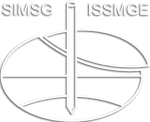A study on the estimation of surface ozone pollution in the Indian megacity, Delhi at pre, during and post Covid years using statistical and machine learning models
A study on the estimation of surface ozone pollution in the Indian megacity, Delhi at pre, during and post Covid years using statistical and machine learning models
The characteristics of a trace gas: surface ozone (O3) concentrations for the Indian city of Delhi are presented from January 2018 to June 2022 in this study. The comparative analysis reveals the ozone concentration of Delhi follows a decreasing trendline during 2021 and 2022 compared to previous years. Locally, low-income areas of Sonia Vihar, densely populated areas like Nehru Nagar, Sirifort, Sri Aurobindo Marg, and green areas like Dr. Karni Singh Shooting Range are identified as high ozone concentration hotspots (average 40-48 m3). The O3 distribution all over Delhi in 2020 and 2021 is concentrated between 30-35 m3 and 25-30 m3, respectively. Delhi faces high ozone pollution during summer (March-June). While the lowest O3 concentration can be observed during January month, the month of May faces the highest O3 pollution events in Delhi for each of the years except 2019, when the highest monthly mean ozone concentration was observed during June. Due to significant traffic emissions, high temperatures, and favorable weather conditions, O3 concentrations in the megacity are on the higher side during the pre-noon and noon while they are on the lower side during the early morning (3-5 AM). In this study, ARIMA and Long Short Term Memory (LSTM) models are further developed and employed to forecast daily ozone concentration for the next year of 2023.
S. Mandal; M. Thakur
9th International Congress on Environmental Geotechnics (ICEG2023)
Climate Change Impact and Mitigation
Geoenvironmental Engineering, Numerical & Constitutive Modeling
https://doi.org/10.53243/ICEG2023-422
